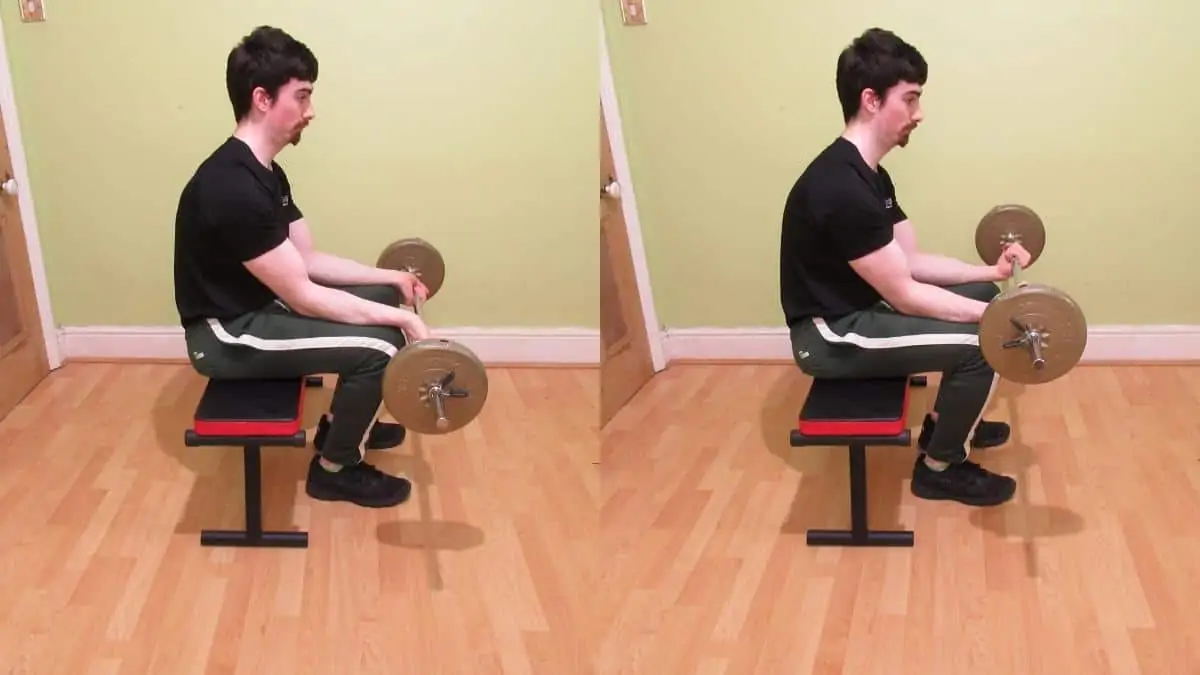The forearm is a naturally well-developed body part for many people, especially those who work with their hands for a living. Therefore, adding extra mass to your lower arms can be like trying to get blood from a stone in many cases.
It’s true what the gym bros say: the forearms are a very stubborn muscle group.
But you don’t have to worry about being saddled with toothpick forearms forever. You see, the barbell wrist curl is the forgotten forearm mass builder.
There are so many fancy gym machines available nowadays that people neglect heavy barbell training, and it shows in their physique.
So with that said, let’s delve deep into barbell wrist curls and learn how to do them for the best results.
Related workout guides
Barbell wrist curl exercise details
- Main Muscles: Forearm flexors
- Secondary Muscles: Forearm extensors
- Exercise Type: Strength
- Exercise Mechanics: Isolation
- Difficulty Level: Beginner
- Equipment Needed: Weight bench, barbell
How to do barbell wrist curls
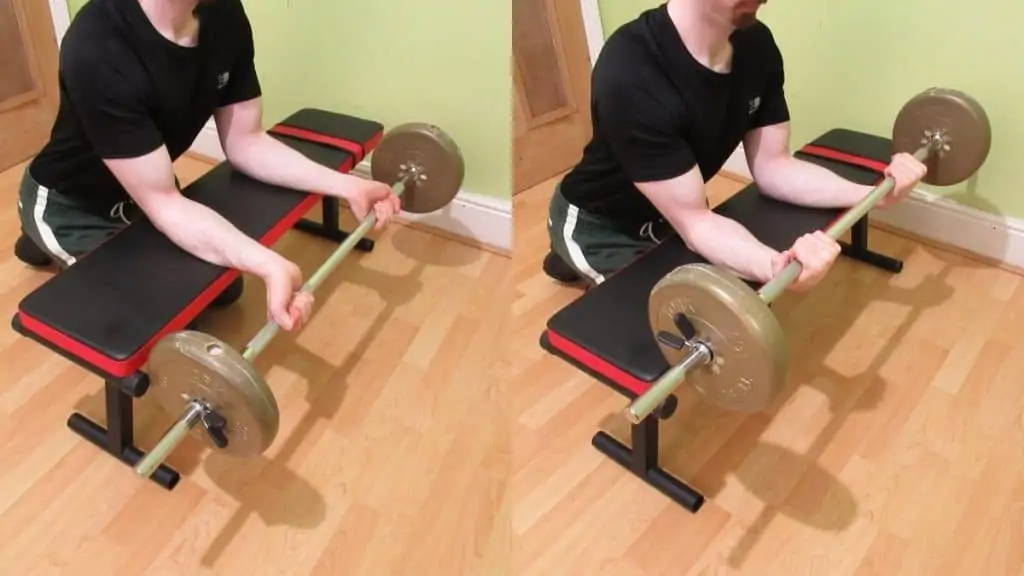
Here’s how to do palm up barbell wrist curls over a bench:
- Place a barbell along the longest side of the weight bench.
- Hold the bar with a palms-up grip.
- Kneel on the floor next to the bench.
- Place your forearms on the bench and allow your hands to hang off the edge.
- Slowly lower the barbell towards the ground by bending your wrists.
- Descend until you feel a deep yet comfortable forearm stretch.
- Curl the weight back up by flexing your forearms.
- Hold the contraction for a split second and repeat for 12-20 reps.
Barbell wrist curl mistakes
Avoiding these barbell forearm curl mistakes can mean the difference between building the forearms of your dreams and spraining both your wrists simultaneously. Ignore them at your peril.
Using an excessive range of motion
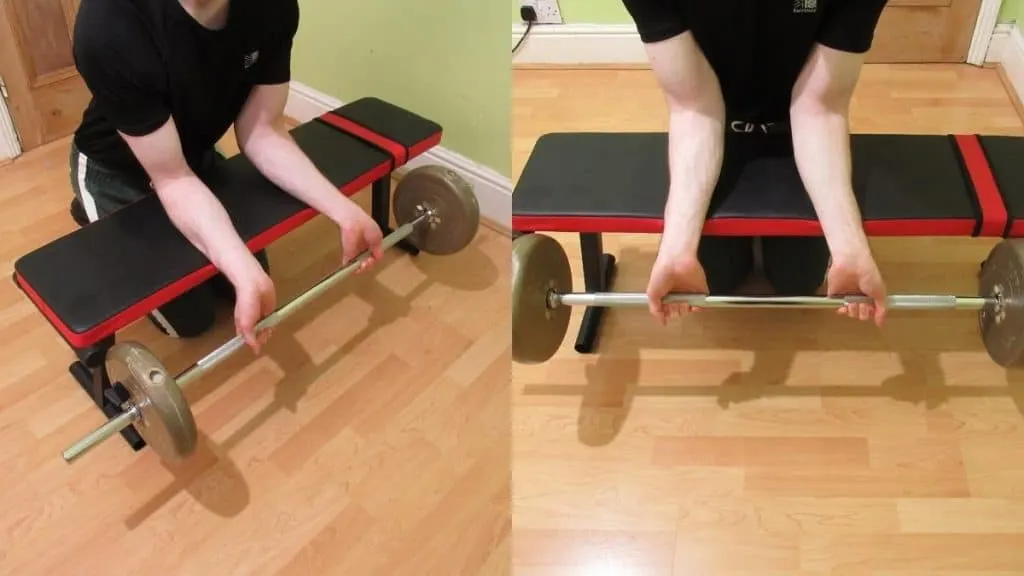
If you’ve read any of my articles before, then you’ll know that I’m a stickler for using a full range of motion (ROM). After all, research shows that full ROM training produces better gains than half repping. [1]
However, like many theories in fitness, people love to take this one to the extreme.
Allowing the barbell to hyperextend your wrists so that they’re parallel with the side of the bench might well give you a great stretch, but your tendons and ligaments won’t tolerate such a practice for very long.
Understand me now: If you exceed your forearms’ natural ROM, you will injure your wrists.
As a rule of thumb, if the stretch is comfortable and pain-free, your form is good. But if you’re unsure of what your active ROM should be, use a light barbell and test how far your forearms can naturally bend.
Doing half reps
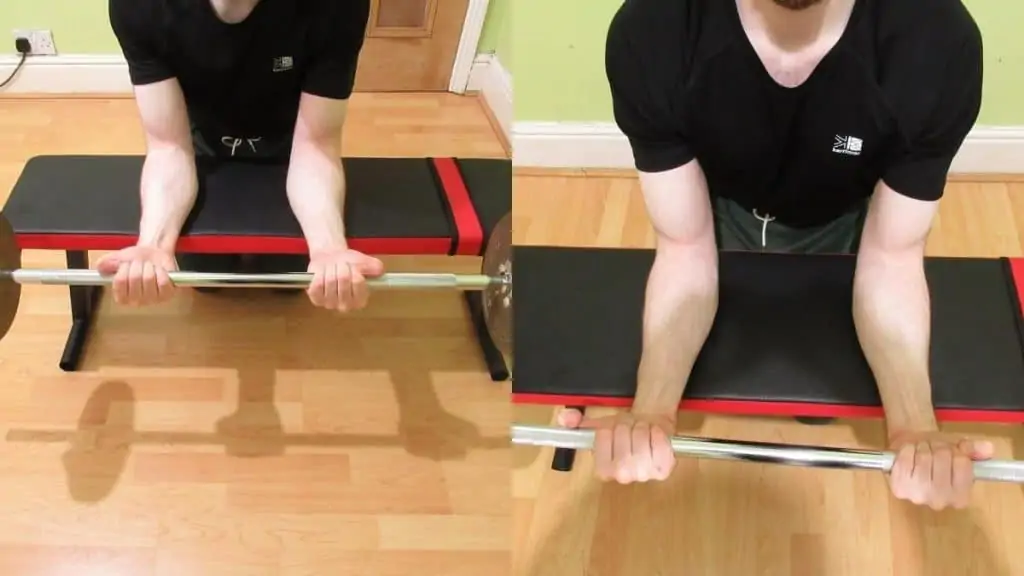
Nothing says I’m a novice lifter quite like half repping. It’s also the hallmark of an ego-lifter.
While it may stroke your ego to boast about your newfound forearm strength, it won’t do much for your actual size.
Even though I just said that an excessive ROM can get you injured, it’s arguable that half reps are actually more dangerous. Why?
Because you can lift heavier weights when you half rep—weights beyond what your muscles, tendons, and ligaments are capable of handling.
So please, unless you’re performing burnouts with a moderate weight, please don’t do the forearm barbell curl for half repetitions, ok?
Performing low repetitions
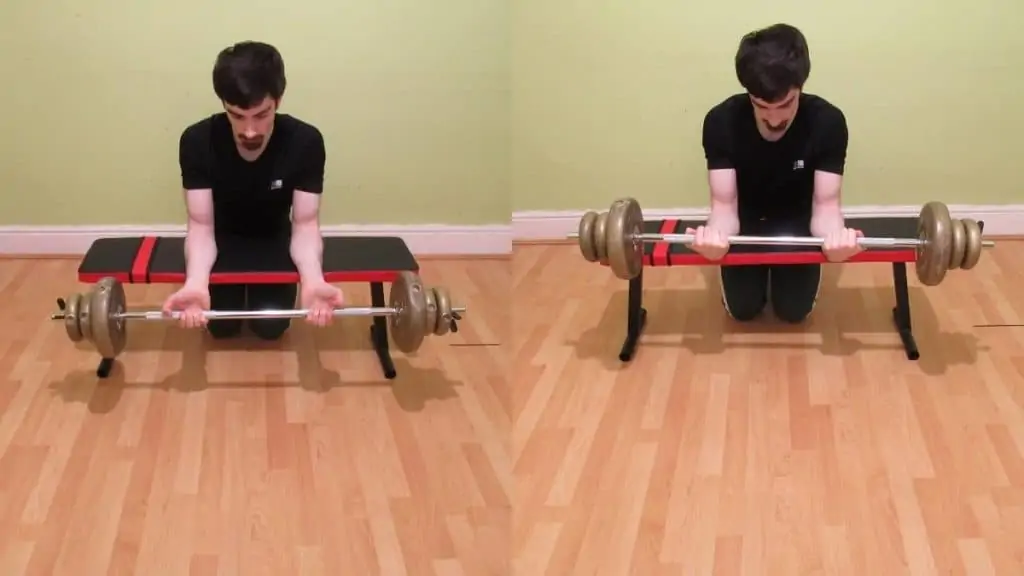
When you’re doing wrist curls barbell style, [2] it can be tempting to lift with low reps because that’s what you’ve been taught to do on practically every other barbell exercise.
However, as I alluded to a moment ago, going heavy on a seated barbell wrist curl is a death wish for your wrists.
Despite what some meatheads may tell you, there are no awards for setting a new 1RM barbell forearm curl world record. And even if there was, you’d have to sacrifice your wrists to set it, which is hardly worth it if you ask me.
Plus, since the barbell wrist curl ROM is naturally so small, you almost need to use high reps to accumulate sufficient time under tension. So stick to sets of 12-20 for the fastest and best results.
Using the wrong side of the bench
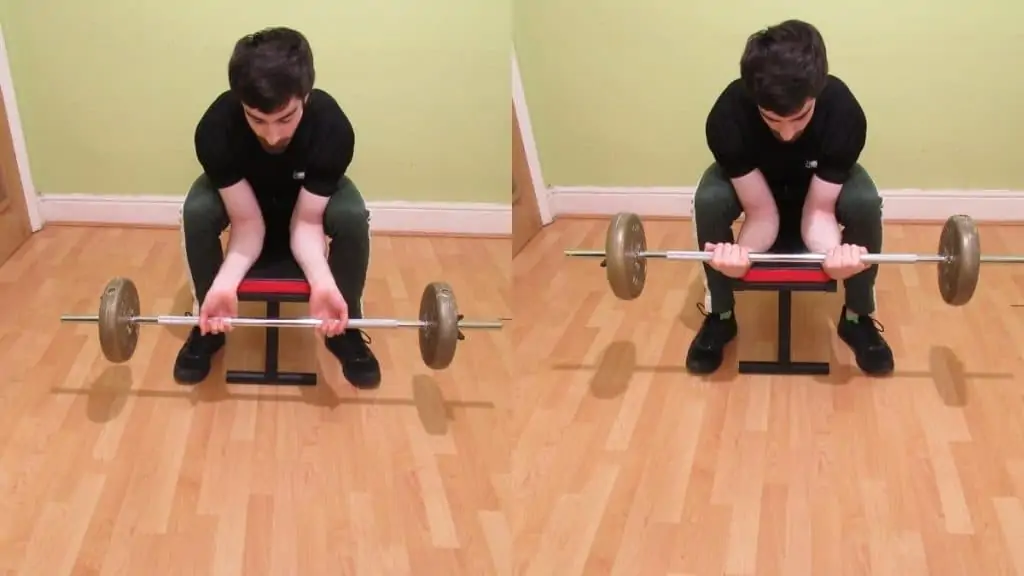
I listed the barbell wrist curl exercise as one that’s suitable for beginners. However, every now and then, I do wonder if I should change my classification.
Fellas, ladies, children, why on earth would you do the seated palm up barbell wrist curl on the narrow side of the bench? Do you want to limit your gains? Do you want to inflict wrist pain upon yourself?
You might still get a decent pump by doing your barbell forearm curls on the wrong side of the bench. But that doesn’t change the fact that it’s the wrong side of the bench!
When your hands are that close together, you’re transferring more tension onto your delicate wrist joints while simultaneously shortcutting your ROM. Ouch.
Letting your fingers take the strain
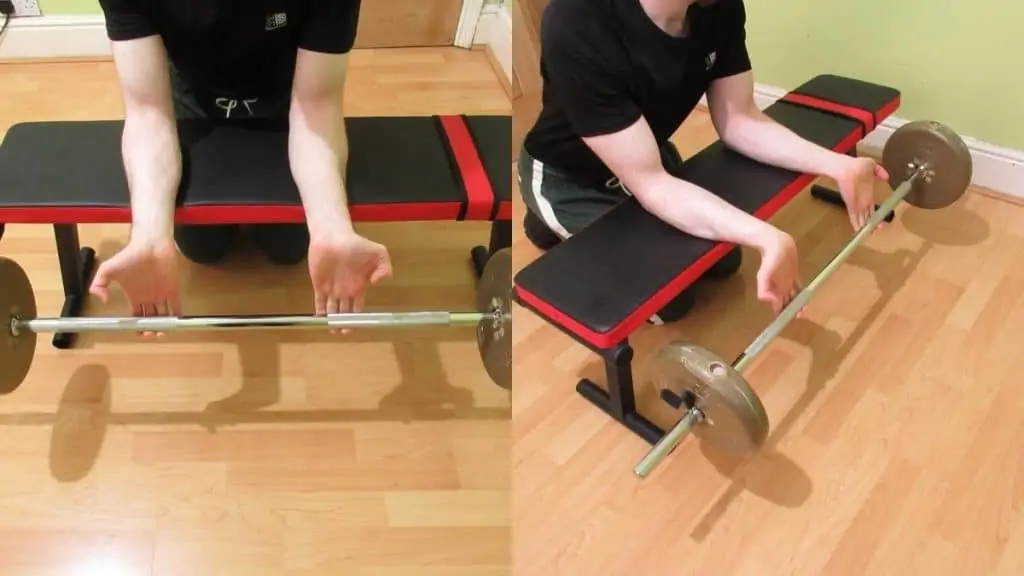
When you’re doing a wrist curl barbell style, it can be tempting to give your forearms a temporary break by letting the bar fall into your fingertips.
Well, not only can this practice actually cause elbow pain (yes, elbow pain), but it also takes the tension off your forearms, which utterly defeats the purpose of performing the exercise.
Instead, maintain a firm grip on the barbell at all times with the palms of your hand. This will immediately active more forearms muscles while allowing you to get away with—and benefit from—a slightly shorter ROM.
Related posts
Barbell wrist curl benefits
If you use the proper form during the seated barbell wrist curl, these are the benefits that you can look forward to receiving.
Breathtaking forearm development
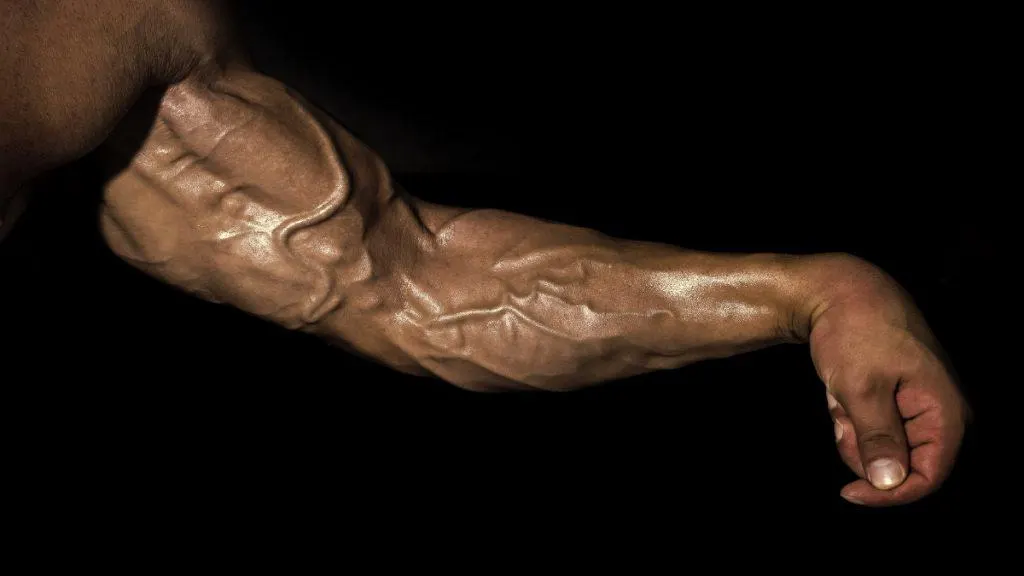
Biceps and abs may get all the glory online, but believe me, the forearms are one of the first muscle groups that others will notice.
Your mirror muscles are mostly covered up in everyday life (unless you insist on walking around shirtless), so it makes good sense to focus on a highly visible body part like the forearms.
In my opinion, nothing says “I’m strong” like a pair of meaty forearms.
Crushing handshake

Since it’s such a potent mass builder, the palm up barbell wrist curl can give you a genuinely crushing handshake if you train consistently.
Nothing is more gutting than building massive arms and then having a wimpy handshake, as if to tell everyone you meet that your muscles are just for show.
Stronger compound lifts
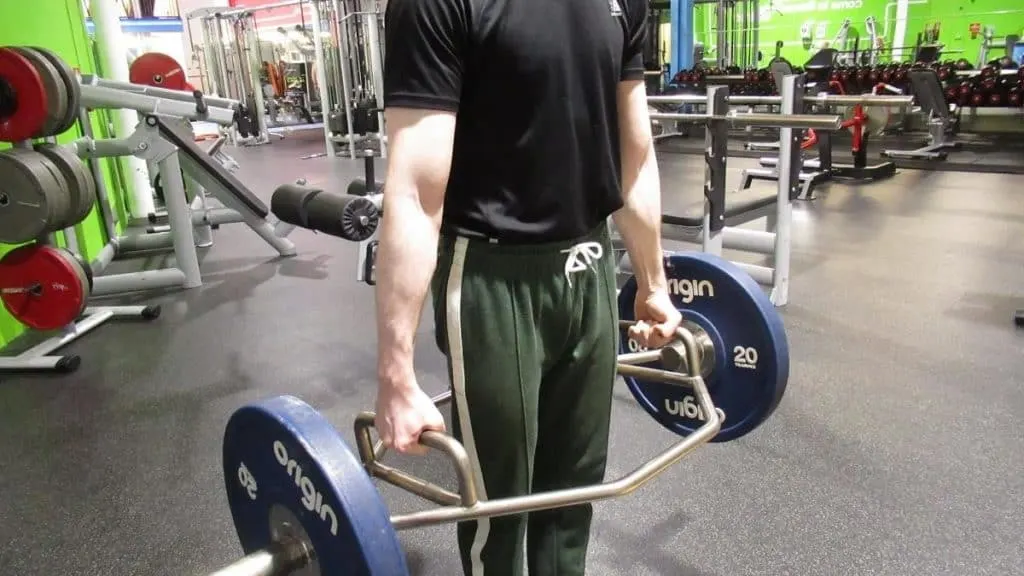
Doing wrist curls with barbell apparatus has excellent carryover to your compound lifts because you get used to using both arms together.
But there’s more to it than that.
The forearms are absolutely crucial to your pulling strength.
Try deadlifting over 500lbs with puny forearms. Ain’t gonna happen unless you use straps.
And even if you train for size more so than strength, the forearms are still critical because their strength determines how much weight you can put on the bar/machine. After all, if your forearms can’t hold onto the equipment when its loaded, then you’ll never develop your back to its potential.
Barbell wrist curl alternatives
Doing wrist curls barbell style is convenient because you can train both arms together. However, for some lifters, the exercise bothers their wrists. And for others, it leads to a worsening of their muscle imbalances.
So here are some alternatives.
- Barbell reverse wrist curl
- Behind the back wrist curl
- EZ bar wrist curl
- Plate wrist curl
- Reverse wrist curls
- Standing reverse wrist curl
- Standing wrist curl
- Wrist roller
- Wrist twist
Dumbbell wrist curl
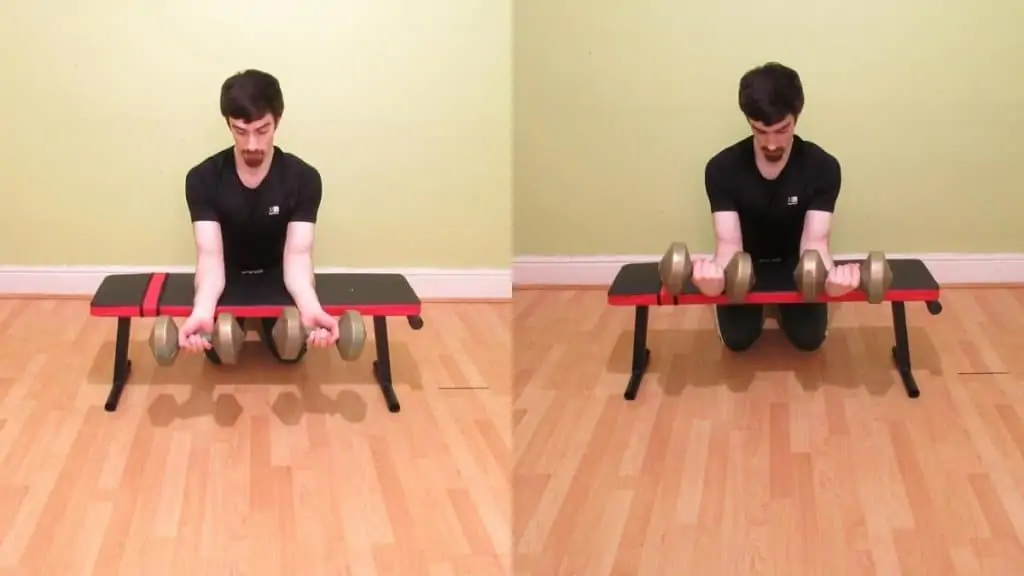
Doing palms down dumbbell wrist curls and regular wrist curls is a great way to minimize and improve your muscle imbalances while also taking some tension off your wrists.
You can grab two dumbbells and train both arms together, or you can stick with one and train each arm separately. If you have noticeable muscle imbalances, then I recommended the latter strategy because it lets you hone in on each forearm.
One arm dumbbell wrist curl
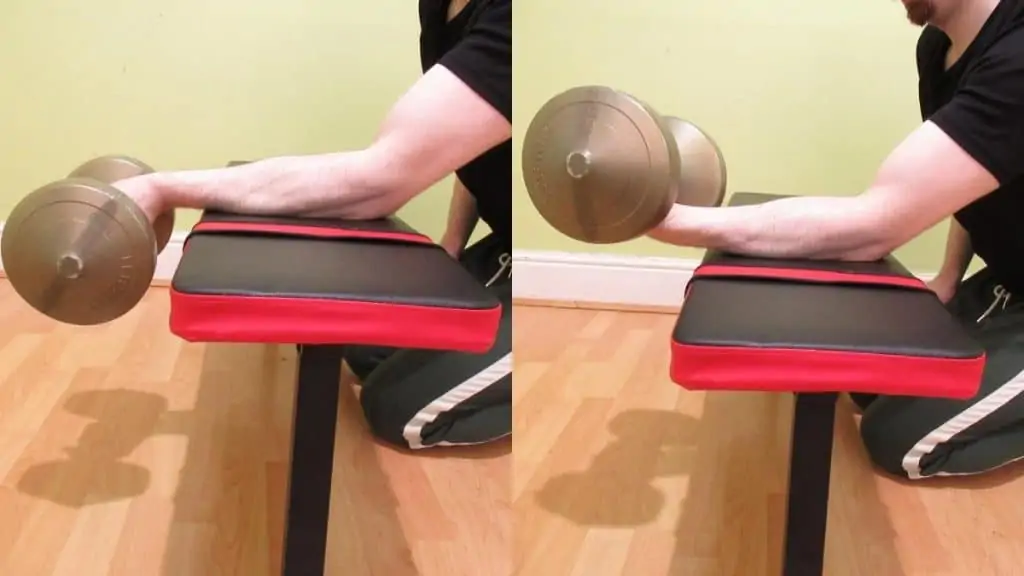
The single dumbbell wrist curl is better than the two-arm variation if you have wrist pain because you can really focus on your form. Or, to put it another way, it’s virtually impossible to watch the movement of two dumbbells.
Therefore, in the 2-arm version, it’s easy for one dumbbell to accidentally rotate your wrist too far, which can potentially lead to a nasty injury.
Cable wrist curl
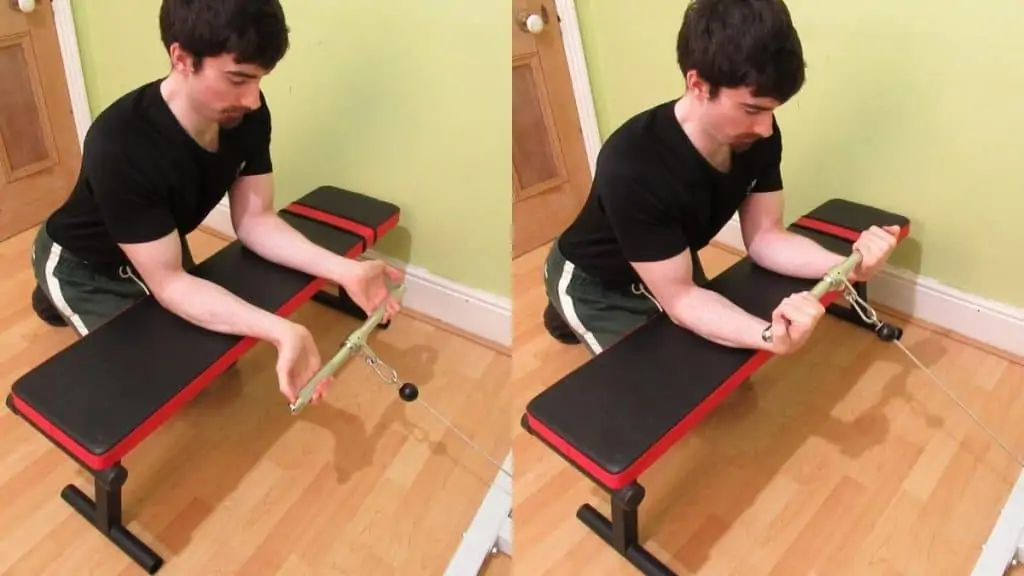
If barbells are the king of powerlifting, then cables rule in the land of bodybuilding.
Not only does the cable wrist curl ease wrist discomfort for many lifters, but it also provides constant tension and a wicked pump. [3]
Essentially, you want to wheel a bench over to an adjustable cable column and then set the pulley to a low position. Then, rest one forearm on the bench in a neutral hand position and grab the cable handle.
From there, you simply flex your wrist, enjoy the pump, and watch the results come pouring in a few months later.
What’s the verdict on barbell wrist curls?

One thing’s for sure, the barbell wrist curl is a phenomenal mass builder when done correctly. [4] The exercise allows you to lift more weight than any other wrist curl variation, and it takes half the time compared to working each side separately with dumbbells.
Done wrong, however, and you can hurt your wrists. So be sure to avoid the 5 fatal mistakes that I revealed to you earlier.
References
- Massey, C. D. W. A. Y. N. E., Vincent, J. O. H. N., Maneval, M. A. R. K., & Johnson, J. T. (2005). Influence OF Range of Motion in Resistance Training in Women. Journal of Strength and Conditioning Research, 19(2), 409–411. https://doi.org/10.1519/00124278-200505000-00028
- Building Huge Arms Super Feature: Forearms. (2019, May 8). Bodybuilding.Com. https://www.bodybuilding.com/fun/superarms_forearms.htm
- Dugdale, N. M. T. (2017, July 10). Tip: Cable Superset for Forearms | T Nation. T NATION. https://www.t-nation.com/videos/tip-cable-superset-for-forearms
- Kraemer, W. J. (1981, October). Kinesiology Corner: Wrist Curls. The Strength & Conditioning Journal. https://journals.lww.com/nsca-scj/Citation/1981/10000/Kinesiology_Corner__Wrist_Curls.13.aspx

